Surviving a short term disaster or a long-term crisis in an urban environment presents its own share of challenges and advantages.
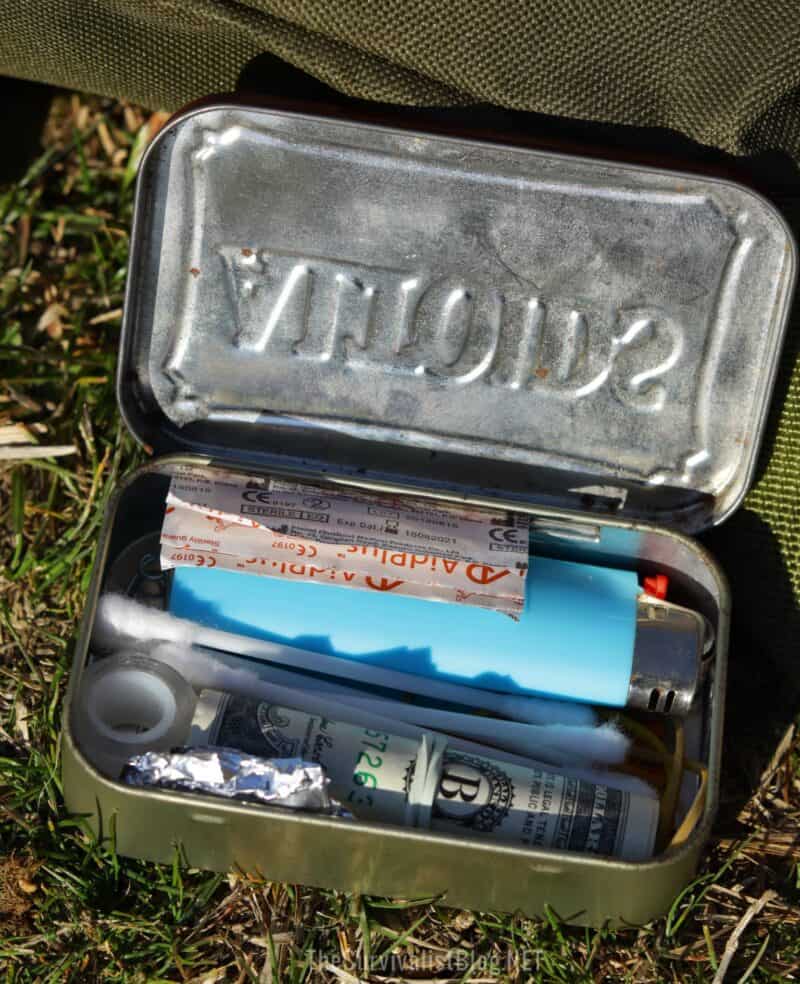
A towering hive of steel and concrete is a unique environment harboring things that can both help and hurt you, the same as any other biome, be it a dry, scorching desert or a lush and gloomy forest.
Surviving in the concrete jungle means you’ll need a survival kit adapted especially for the terrain and the various threats within.
Just because you are within the beating heart of civilization does not mean you get to go light or slack off compared to prepping to survive in an austere environment; to do so would indeed court disaster.
You’ll need plenty of skill and know-how, but also the right tools and gear to maximize your chances of survival.
In this article, we’ll be showing you how to put together an urban survival kit and discussing the reasoning behind the gear choices.
If you’re looking for the downloadable checklist, you can get it here.
Survival Necessities Don’t Change
If you are surviving for five minutes or five months, in the heart of the city or in the remotest reaches of the uncharted wilderness, your survival priorities don’t change.
You still need exactly the same kinds of resources and accommodation to survive: you must have air, shelter, water, food and security. How and what provides those commodities may change, as well as how easy or difficult it is to procure them, but the name of the game remains the same.
You must have air (clean air) to breathe. You must be able to maintain your body temperature in spite of temperature extremes. You must have access to clean, drinkable water in order to remain hydrated.
And you must be able to procure a steady source of calories to fuel your body, and ergo all your other efforts to survive. Lastly, you must be able to fend off any potential threats that could compromise your survival, either physically or materially.
Some of these priorities will be a bit scrambled in an urban environment. Air, often the most taken for granted necessity, could rapidly become a concern depending on the threat you are facing.
Food too presents an interesting switch: while packaged and prepared food stuffs may make even long term calorie intake seem a trivial concern in a city, at least at first, the sheer number of people drawing from food stores completely dependent on civil infrastructure and commerce will ravage that supply.
With millions of taps connected to public water supplies, why would one even think to be concerned about clean drinking water, and that alongside an uncountable amount of bottled water?
That same public supply is an incredibly vulnerable and fragile thing, one that will be easily compromised by many natural disasters, damage to waste and sewer lines, or direct attack.
Security will be one of your biggest concerns. While there will always, thankfully, be people who will selflessly sacrifice and help their fellow man, there will also always be those who prey upon them, those who will see a major societal disruption and perhaps no rule of law as a golden opportunity.
More people means more crime, and more people suffering from despair as a situation grows worse and supplies thin out. Your fellow man is the most dangerous predator on earth, and you’ll be surrounded by them. You must be able to protect what’s yours and protect yourself.
Gear Carry in Urban Environments
It isn’t all bad in urban environments. As I mentioned earlier, every environment furnishes challenges and advantages. One of the biggest advantages in an urban environment is the broad latitude in attire and carriage afforded by so many people so close together. In any people-packed space an individual is just a part of the background, assuming they do not do something truly attention-getting.
In areas where people often commute on foot backpacks, satchels, and other personal luggage of all kinds is common. This can easily allow one to carry a huge amount of gear without attracting any undue concern or attention so long as the style of luggage is acceptable. The popularity and trendiness of messenger bags for men and, as always, large purses for ladies can make your lifestyle of readiness even easier. While carry of luggage in suburban and rural environments may not necessarily draw ire, it does stick out more.
Even for those who do not want to or unable to carry some kind of luggage there are ways to transport an abundance of gear on your person throughout your adventures and forays in a metropolis.
Vital gear can be carried everywhere from in your pockets, on lanyards, or even in your wallet. By selecting items based on performance to weight ratio, even your lean, on-body urban survival kit can remain “no profile” and still provide you with crucial resources.
No matter how you decide to carry your gear, you’ll find yourself relying on a few good standbys at any rate. In the next sections we’ll take a look at a few urban environment-specific concerns as well as ways to mitigate them and then we’ll take a look at the list of gear you should add to your survival kit.
Urban-Specific Considerations
One thing you must keep in mind when preparing for urban environment survival is the preponderance of buildings, doors and other portals that can be readily locked down to impede your progress.
This means you must make allowances in your gear for tools that will, in extremis, gain you access to passages, throughways and supplies that would otherwise be closed to you. It is not the height of intelligence to assume that you’ll always be able to take the sure, swift road out of town or find what you desperately need easily and when you need it.
This means things like lock picks (and the skills to go with it), bolt cutters and heavy-duty prying or smashing tools. You might already be thinking “Gee, Charles, those sound an awful lot like breaking and entering tools.” Right you are, reader, they sure do.
And even though you are a Good Guy or Good Gal and would never, ever use those for nefarious purposes your locality might have laws governing the carry of lock picks or other “B&E” tools.
Even if they don’t, a cursory interaction with your fellow citizens or law enforcement that reveals the presence of those tools will definitely raise some eyebrows. It is up to you to know the laws and to maintain a low profile lest you get yourself categorized by cop or neighbor as someone to keep an eye on rather than a trusted member of the community.
What’s more, in many large metro zones you’ll face stricter regulation of what kind and where you may carry weapons. This is to be expected even in conservative states as all large cities trend toward liberal, i.e. anti-self defense, regulation.
Once more it is up to you to know the laws, as ignorance will not save you from a charge on such matters. Yes, you had damn well better have some means of self-defense when the SHTF, but it will do you no good to run afoul of the law prior to that occasion.
You had better have some effective means of defense close at hand because urban centers are notorious for their rates of crime and violence in normal times. You will be at greater risk when a major societal disruption takes place due to some major disaster.
Gangs, malcontents, psychopaths, the desperate and even organized crime outfits will all be able to use the chaos as cover for their activities if they so choose. Yes, the situation might be so bad, at first, they will be dealing with their own problems the same as anyone else, but you can depend on a greater risk from those bad actors in any major crisis. Like the old saying says: when the cat is away the mice will play.
The other specific urban environment consideration that you must plan for is a significantly higher likelihood of encountering airborne contaminants that can make breathing difficult or even dangerous.
Collapsing buildings, great quantities of man-made material to burn and the ever present risk of contagion in an epidemic, pandemic or biological agent attack make air filtration and breathing aids a priority prep.
Consider that, in rural settings, the only typical scenario you might encounter that would entail an air quality hazard would be an errant dust storm or, more likely, being downwind from a forest fire and the probability that you would require a respirator, face/ dust mask or similar item as part of your standard kit is drastically reduced.
Your Almost Perfect Urban Survival Kit
The following items will serve the vast majority of dedicated urban dwellers well as a general purpose survival kit, and is still ripe for tweaking and customization depending on your specific plan of action, be it bug-in, bug-out or something else.
The following is the short form list for both “slick” urban survival kit carry and carry of a larger “enhanced” kit with luggage of some kind. Scroll down a little farther for detailed explanations of each item.
The Slick Kit
| Weapon | Pistol, compact or smaller. Enough for a “break contact” defense. |
| Multitool, Compact | Small Leatherman or similar. Swiss Army Knife. Flat tool card (carried in wallet or in lanyard). |
| Flashlight | Small enough to carry unobtrusively in pocket. |
| Lanyard Pouch | Worn discreetly under shirt or as ID holder. Allows extra cargo room for discreet carry of small items. |
| Lock Picks and Shims | “Punch Card” set can be carried in wallet behind credit cards or in lanyard. Allows chance at accessing closed throughways and supplies in a pinch. |
| Medical Kit | Basic trauma kit. Carry on ankle in specialty cargo cuff or a very slick kit in pocket or concealed on belt. |
| Clothing | Make it a point to try and wear shoes suitable for rapid, lengthy movement by foot if possible. Sunglasses: choose a pair that is ANSI or Mil-STD rated for impact protection. |
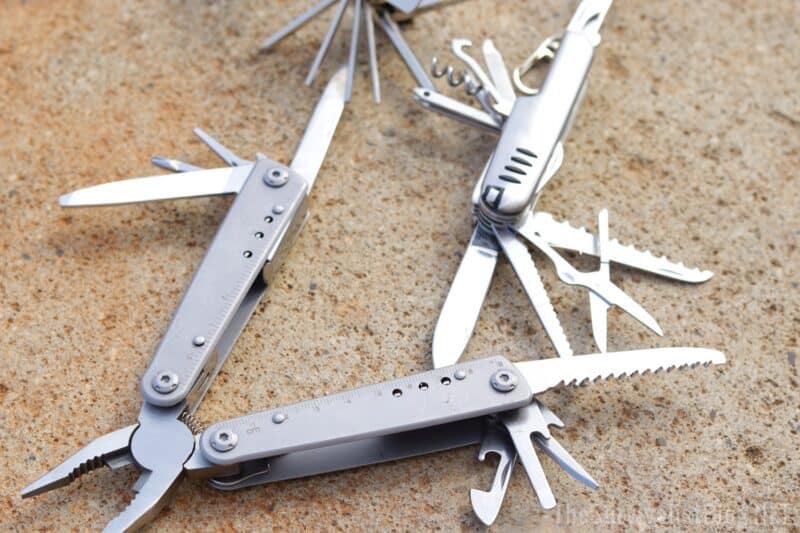
The Enhanced Kit
Quick disclosure: If you visit a link in this article and then you buy something, I may earn a commission. As an Amazon Associate I earn from qualifying purchases. You can read my full disclosure here.
| Pack or Bag | Backpack, satchel, purse, briefcase. Choose luggage based on your normal mode of dress, typical workplace environment (if applicable) and specific part of the city you move through. Always try to blend in. |
| Weapons, multiple | Pistol. Knife. Pepper Spray. Tactical Pen. Off-body carry is now an option, may afford better selection of firearms and additional ammo. |
| Toolkit | Multitool Vise-Grips Lock Picks, Shims Compact Bolt Cutters Small hatchet or pry bar Permanent Marker and Notepad Small roll of duct tape |
| Medical Kit | Trauma Kit. Includes gauze, chest seals, TQ’s, Quik-Clot or equivalent, ace bandage, “combat” pill pack etc. Minor Injury Kit. Band-aids, antiseptic, moleskin, meds for pain, nausea, etc. |
| Blanket | Whether you opt for an emergency space blanket or for a travel blanket, you shouldn’t skip on this easy way to keep warm. |
| Clothing | Suitable layer for rain. Gloves. Hat, for warmth or shade. Eye-Pro: impact-rated sunglasses or lightweight goggles. |
| Mask | N95 rated or N99. |
| Flashlight | With spare batteries in appropriate storage container |
| Chemlights | For marking and safe, heatless lighting |
| Backup Battery/Power Bank | Your phone, GPS or other devices will be useful in most situations; keep them charged! Include an extra long USB cord appropriate to your device. |
| Map & Compass | Map of city and surrounding area is sufficient. Small basic or button compass for direction finding is adequate. |
| Water Bottle and Filtration | You should be able to collect and filter water on the go. The Sawyer Mini and the Lifestraw are the top choices |
| Food | You may be burning calories at a prodigious rate in a crisis. Standbys like jerky, energy gels and granola are all good options. Don’t count on finding much food when SHTF! |
| Storage | If you’re looking to buy a phone, get one with at least 64 GB of storage. Also consider getting a reliable USB stick. |
| Cordage | You’ll want a few feet of 550 Paracord. You never know when you might need it. |
| Superglue | |
| Spork | Some people think this is useless, so it’s up to you if you want to include it. It’s small and lightweight. |
| Firestarter | Nothing fancy here, you just need 1-2 lighter and some waterproof matches or a ferro rod. |
| Toothbrush and floss | Dental hygiene IS important. If you don’t continue to take car of your teeth post-collapse, you’ll wake up a few months or years later with some painful problems you wish you had avoided. |
Gear Breakdown
Weapons
You should have, but hopefully will not need, a weapon to protect yourself from the desperate, deranged and criminal elements of society we discussed previously.
Firearms obviously confer considerable advantages if you may possess them without too much trouble in your locale and assuming also you have the skill to use them.
Carry additional ammo if at all possible, but do not go overboard: ammo is heavy, bulky, and you do not want to get sucked in to proper gun battles.
Knives are excellent both as tools and weapons, and can be found in abundance absolutely everywhere, laws be damned, in a pinch.
Pepper spray is chronically undervalued by preppers, and its social acceptability combined with range, effectiveness and ready availability makes it an invaluable tool for all survivors. You had better have an option for self-defense in-between fists and gunfire or stabbing.
Lastly, a pseudo-improvised weapon like a sturdy tactical pen will allow you to always have something on you, even in areas where weapons are strictly verboten or are taken from you.
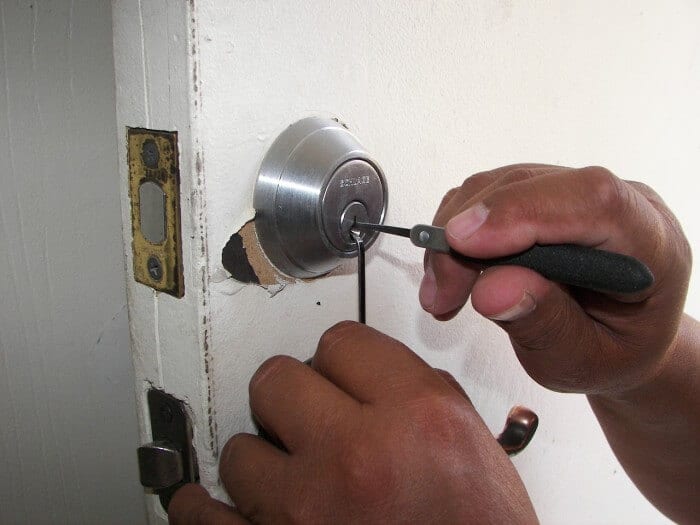
Lock Picks
The inclusion of lock picks into this type of kit may rankle some folks, but having the ability to access, quietly, areas that would otherwise be denied to you in a legitimate crisis when the chips are down is invaluable.
All manner of lock-defeating tools require considerable practice to use so get some and start practicing. And while you are at it, make sure you bone up on your area’s laws about such implements. Carried as part of a flat card, these will ride easily in your wallet or in your lanyard.
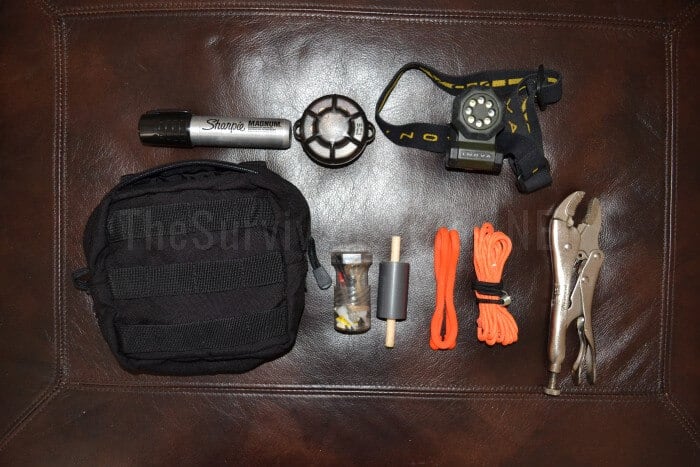
Tools
You will have all kinds of opportunity to employ other tools in the city. From tightening or loosening fasteners on your gear, car battery leads, stripping wire and more, you need a good do-all tool like a classic Swiss Army knife or a modern wonder like a Leatherman or Gerber multi-pliers.
These gems also have the advantage of including one or two blades as well. A superlight option is a thin, metal tool card. These ingenious little gadgets feature all kinds of (abbreviated) functions in one handy tool. Many even have a variety of hex nut wrench sizes built in. These are the obvious “no-profile” option for slick carry.
Duct tape’s uses are many and obvious; it even has use as a first-aid device. Serious locking pliers or vise-grips will get far more done than the small, comparatively dinky pliers as used in your multi-pliers, and can handle everything from removal of badly stripped nuts to shutting off oddly-shaped utility keys and valves.
A small hatchet or prybar will allow you to flex your dynamic entry muscles when lock picking fails, and both can be used to shift heavy objects, open sturdy containers and, of course, as ferocious melee weapons if push comes to shove.
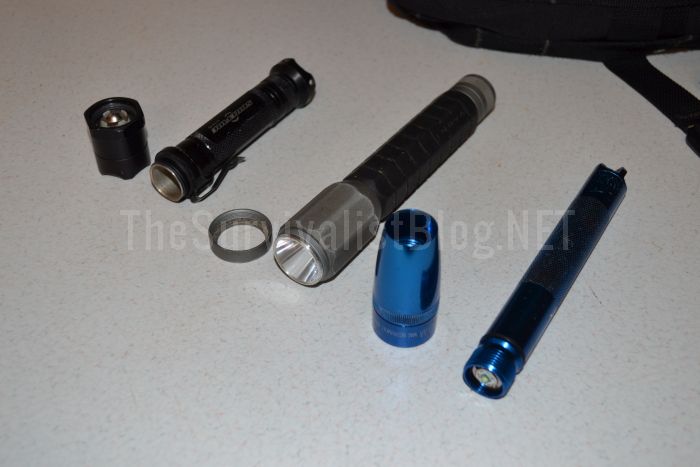
Flashlight
No prepper should ever be without their flashlight. More than ever especially in a city. Turn any corner, enter any building in a major city and let the power fail. Snap! Plunged into darkness, even in broad daylight.
This is an especially frightening scenario in an underground setting like a subway. Your flashlight should be plenty powerful (at least 200 lumens) but should also emphasize runtime over raw output.
A good, compact flashlight with a tailcap will avail itself well in all kinds of situations, from mundane navigation and task lighting situations to self-defense scenarios, both armed and unarmed.
Signaling using Morse code or just frenzied blinking or sweeping is another useful trick your flashlight can pull off. You can save even more space in your kit if running slick while adding capability if you wrap a few turns of duct tape around the body.

Medical
The type and variety of injuries you may be facing in any urban disaster are many. Any minimalist trauma gear should focus on control of blood loss and penetrating injuries which are common in all kinds of incidents, from natural disasters to terror attacks.
More substantial kits will double up on the former while adding things like chest seals, airways, compression bandages and medicines appropriate to traumatic injury management. Wide spectrum antibiotics will be useful in dealing with injuries or thwarting bacterial threats, natural or otherwise.
Like some other items in this kit, all of these require training and know-how, as hoping a helpful, useful, trained stranger will come along and be able to use your kit on you is not a strategy.
If you are carrying your kit in a bag of some kind, you will have the room to spare for a small injury kit: band-aids, antiseptic wipes or swabs, basic medicines for pain, nausea and so forth. While not strictly essential, these little things may help someone else (or yourself) stay focused and at ease, both valuable commodities in a crisis.
Clothing
If you work in a city, your daily attire is already chosen for you, probably. But if you work in a stuffy suit or other business attire, you should make it a point to keep a rugged, working change of clothes at the office or with you if possible. At the very least a good pair of mobile, sturdy shoes or boots and socks. You’ll more than likely be counting on your feet for the duration.
No matter who you are or where you work, you will most definitely want a good set of gloves: cities will quickly become a labyrinth of sharpened metal and glass in the wake of any major disaster, and you’ll want to keep your hands from getting shredded. If you don’t habitually wear sturdy, impact-rated sunglasses already, make it a point to toss a pair into your survival kit.
A compact, stuffable rainproof shell or windbreaker is another handy item to have. Though you will be surrounded by buildings, don’t assume you will have the purview or the time to stop for shelter if it starts to rain. Better to have a light weight garment that will keep you dry and not need it.
Lastly, include a hat for warmth or shade depending on your location.
Mask
Anyone who remembers the horror and awe of the 9/11 attacks will shiver and recall the air clogging with soot, dust and smoke, a veritable fume of poison. That can happen again, and it will only take a fire or calamity of far less intensity than that of 9/11 to see the air quality fall to dreadful levels.
A disposable mask or reusable respirator with cartridges will keep you breathing until you can reach clearer air or things settle down.
You want a mask rated N95 or better to make sure you are catching the massive majority of all the crud in the air before it makes it to your lungs. If you go with a disposable mask, carry more than one; they do clog up and stop working over time. Also make sure it is stored carefully in your kit as these are not the most durable items around.
A good, modern gasmask is another option, but their drastic expense, bulk and special procedures for use means they are not the best option unless you need full face protection or are using it as part of a greater environmental suit outfit.
Battery Backup/Power Bank
Don’t assume that your phone will become useless, or GPS satellites will fail immediately when the SHTF. Sure, they might, but they also might not, making your phone a valuable communications tool along with all its other many functions. No matter what you are facing, an empty battery in conjunction with a downed power grid means no more juice.
Take your charging on the road and drastically extend your up time by use of a backup battery system. The latest versions are smaller, lighter and cheaper than they have ever been, meaning these are ideal for any prepper. No need to stop, set up panels or anything else: just plug in and go.

Map & Compass
You might know a city like the back of your hand and foolishly believe that a compass is only worth bringing out into the deep country in a SHTF situation, but both will be tremendous helps in finding your way into, out of or through a cityscape, especially one that is badly damaged or otherwise not so recognizable.
A good map of your city and the surrounding area, at a minimum will let you plot your moves based on the situation at hand while a compass will let you navigate using nothing more than landmarks when everything else has failed.
Water and Food
Water in a major metro area appears as if it will never run out. With a million faucets backed up by endless mountains of bottled water, this is one time you don’t need to spend so much worry and weight on bringing it along, right? Wrong!
City water infrastructures are highly vulnerable to damage or sabotage, and you must have the means to make found water sources safe to drink, and also the means to bring it with you.
A water bottle with attachable or separate water filter will save the day in this situation, just as it will in- you got it- every single other kind of disaster! I like to use a classic 1 liter Nalgene with screw-in water filter. This lets me fill and drink on the go with nary a wasted step.
Food is also a concern, though not as pressing as water. If you are forced to take off on foot in a bid to survive and escape, perhaps even picking your way through a badly mauled urban landscape, you’ll be burning a ton of calories.
Though you will still have a long way to go before you starve, a ready source of quick, easy calories will keep your mind sharp and your stomach from grumbling.
Go with trusty standbys like beef jerky, granola or other “trail food.” Anything is acceptable so long as it is small and stable enough to keep in your bag for a while before spoiling.
Taking Your Survival Kit One Step Further
Most of the survival items you’ve read about here are what you will need in other emergency kits, such as a bug out bag, get home bag, INCH bag, car bug out bag and everyday carry kit. So feel free to buy some of these items in bulk if you get a great deal, and spread the remaining ones in your survival kits, safe room, bug out location and your vehicle.
Conclusion
Urban survival may be a challenging and daunting prospect to those preppers who have only centered their training and preparation on the classic model of wilderness survival. But the concrete jungle holds both new risks and new advantages compared to the harsh but beautiful vistas found in nature.
By planning accordingly and carrying a kit focused to adapt to urban environments, you can drastically improve your chances of surviving a SHTF situation in the largest and most crowded of cities.
An easy way to build your urban kit is to have a checklist that you can tick items off of it. Since each survival item takes a fair amount of research, we made this PDF that you can use.
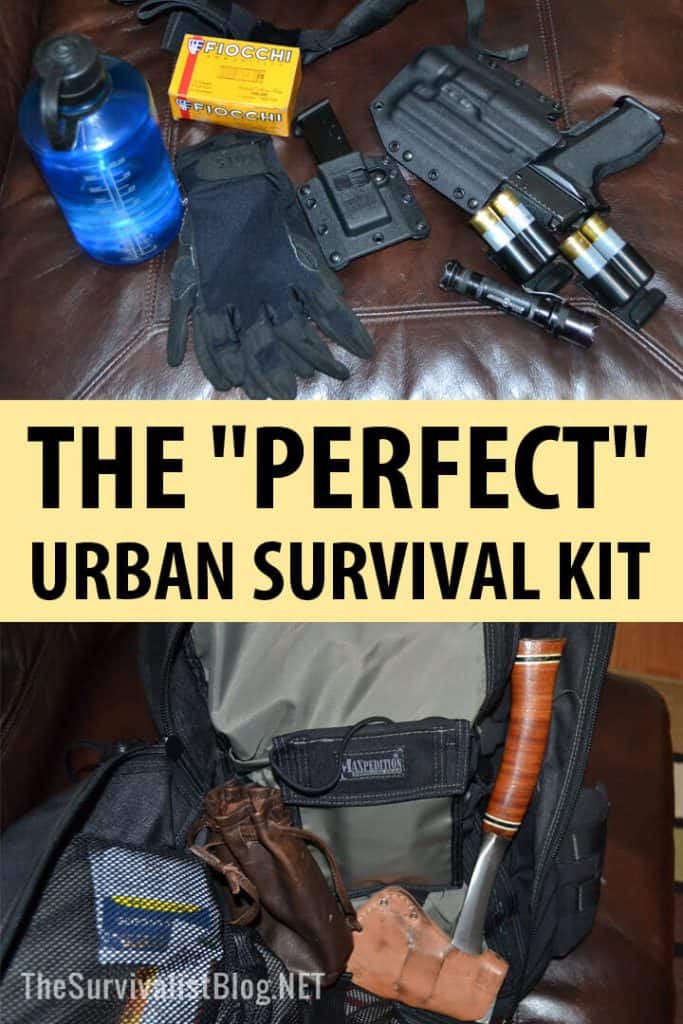
Charles Yor is an advocate of low-profile preparation, readiness as a virtue and avoiding trouble before it starts. He has enjoyed a long career in personal security implementation throughout the lower 48 of the United States.

If I lived/worked in an urban enviornment I’d definitly include a smoke mask. They are small and light weight, but can mean the difference of getting out of a burning building or not. At least add goggles (swim goggles) with the N95.
Something like this would work well (keep in your desk?): https://www.amazon.com/Denshine-Certification-Respirator-Emergency-Protective/dp/B07HCBYTBK/ref=sr_1_18?crid=2V017JFO7OASG&keywords=smoke+masks+for+fire&qid=1564683225&s=gateway&sprefix=smoke+mask%2Caps%2C765&sr=8-18
I’d like to comment about the use of button compasses in an urban environment. I knew many big city and suburban police officers who wore these small compasses on their watch bands, including myself. You might be very familiar with your beat, precinct, or town, but get out of the familiar, and even knowing the cardinal directions can get tricky, especially at night.
Your safety can depend on knowing simply whether you’re chasing a bad guy west between the houses, or is it east? You may not know exactly where you are, but the cops that work that area or city will have an idea and the more accurate the info you provide over the radio, the faster they can find you and cut off the escape of the bad guy as well. BTDT on both sides.
I usually use the Sun & shadows to navigate in city or countryside but twice I really needed a compass as heavy fog rolled in obscuring all my usual navigation aids. I live among the Great Lakes so sooner or later you run into a shoreline but it conserves a lot of fuel if you can use a compass rather than driving forever to find a water landmark.
Rod,
I carry several compasses on me at all times, including a little button compass; but, there are a few things of which to be aware.
Using a compass too close to your body may affect the compass reading if you are carrying any amount of metal gear.
A compass heading should be used to take a waypoint, at which point you walk to that waypoint and repeat.
Anywhere you live there will be landmarks like crossroads, streams, power lines, etc., so having the knowledge (or map) of the areas to identify them is important. Like your shoreline, there are places in southern Ohio where I hunt that would allow me to hit some identifiable landmark in any direction I choose to walk.
5 C’s specifically for urban areas
cell phone and charger (solar, wall wart, 12v, battery bank & cord)
cash (currency in small bills, coins, credit card)
condom (carry water)
cleanliness: toilet paper/tissues, hand sanitizer
calories: emergency ration, jerky, nuts
I’m making a Get Home Bag for my daughter who works in Manhattan. The information here is very helpful in putting together a bag for her to leave in her office. Although she is only a ten-minute walk from her apartment there on the East Side, I can’t imagine what it would be like trying to go west from there. She would have to walk north and then west. Should she be able to drive, a different bag should remain in her car, one with the heavier and additional supplies = a BOB. I’ll work on that next.
I started thinking about preparedness years ago. I’m glad I did, as I had pandemic supplies when the pandemic came around. Now, with riots and clashes in cities, it is more important than ever to be prepared for anything. I think about my grandparents and have a well-stocked root cellar, too, as well as being a forager and herbalist with an extensive apothecary -good for bartering here in Ohio.
Thanks so much for helping a little Ohio grandma who grew up never considering that I should need to be prepared.